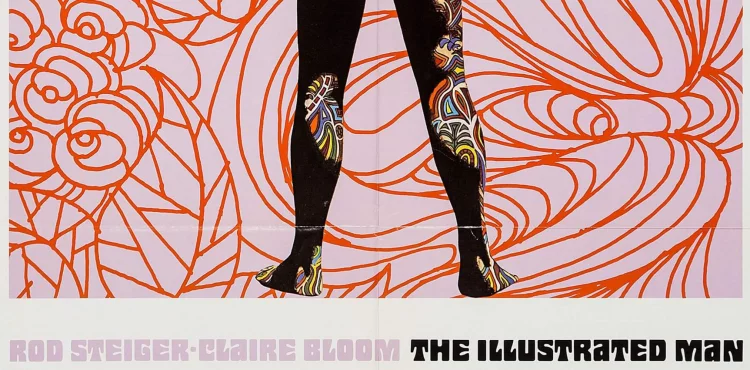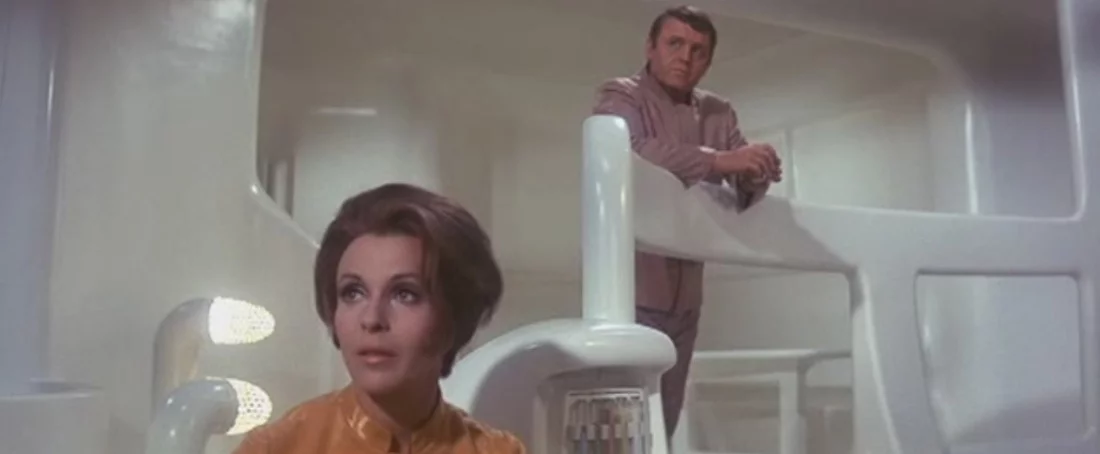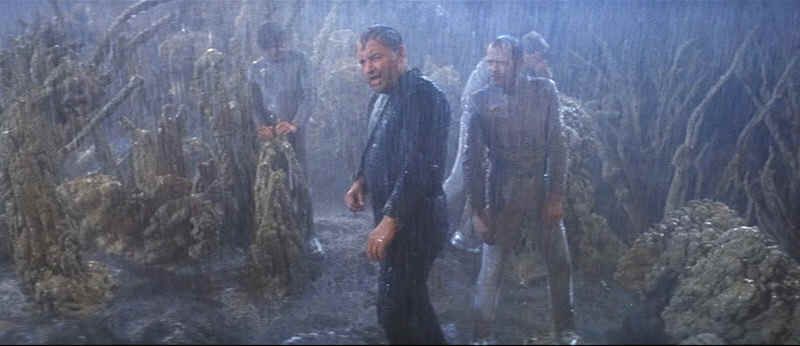
I was intrigued when selecting a film for review when I spotted the title ‘The Illustrated Man.’ One of my all-time favorite authors happens to be Ray Bradbury, whose short story collection of the same title serves as the basis for this movie. Something about his writing style – of making the future (or even horror) seem so whimsical and appealing and wondrous – turned me into an avid reader of his works; a movie interpretation of his stories obviously piqued my interest. And I was curious as to which of the 18 stories in the collection would be chosen.
In the movie, a young homeless man named Willie jumps from the back of a battered truck into the heart of the central California mountains sometime during the Great Depression. He finds a spot near a lake and sets up camp. Soon, another traveler stumbles onto the camp, an angry man named Carl who totes a little dog name Peke in his pack. But it’s the tattoos – “skin illustrations,” as Carl insists on calling them – covering almost every inch of Carl’s body that most interest Willie.
Carl tells Willie the story of the illustrations, of the mysterious woman Felicia who covered his skin with them, and why he needs to find her. Those designs have caused him nothing but trouble, providing the people who dare to look too long at them to see into the future. What’s worse: the one blank space left on his back left shoulder forces viewers to confront their futures, and more often then not, they don’t like what they see, ultimately turning Carl into a pariah. As Carl rants about Felicia, Willie risks glancing at the illustrations and finds himself lost in their visions of the future:
- In “The Veldt,” the children of the future spend time on holodecks as their playrooms, and Carl and Felicia’s two children are no exception. But during the past few days, their holodeck seems to display a strange program: an African veldt featuring a pride of lions. Something doesn’t feel right with the lions, especially when Carl notices that they’ve been joined by a tree full of vultures. Both children insist that they know nothing of that program – that it doesn’t exist in their room…
- An Earth rocket crashes onto the perpetually rain-soaked surface of Venus in “The Long Rain.” Carl leads Willie and two other survivors through the rain in search of one of several “sun domes” designed to provide a break from the constant downpour. One by one, the non-stop drumming mixed with Carl’s tyrannical role as leader begins to take its toll on the survivors…
- Carl returns home to Felicia after a meeting with the last men on the planet, who have all reached an agreement that this particular night is “The Last Night of the World.” They shared visions of a fiery, destructive end to the planet, so to spare their children from suffering such a horrible death, it was agreed that all the children should be given medicines so they would pass quietly in their sleep. Unfortunately, the end of the world doesn’t go quite as planned…
- Even after catching those glimpses of the future, Willie’s curiosity takes over, and he breaks the final taboo of staring deep into the blank space on Carl’s shoulder…
An interesting choice of stories from the original collection. Anthology movies can be tricky beasts, especially when the source material comes from the works of someone such as Ray Bradbury. But I enjoyed watching as Willie became increasingly ensnared, not just by the story Carl tells about the “skin illustrations,” but by what Willie’s imagination conjures when gazing at each of the illustrations. His curiosity matched my own, and I was just as intrigued.

The acting was decent, but given the star power (Rod Steiger as Carl and Claire Bloom as Felicia), I was a bit surprised at how over-the-top Carl was most of the time. At first, his gruff, angry hobo nicely set the tone for the story that ties each of the short pieces together. But as that story progresses, his anger increased almost too much, and within each of the stories, Carl seemed to become more and more melodramatic until the final story – complete with a strange British accent – felt scripted and out of sync with the rest of the film.
“The Veldt” and “The Long Rain” translate well from the book to the screen with only minimal changes, but those subtleties work. The last story, though, veered too much from the original, changing the outcome from what I remembered. I don’t mind a few changes here and there if they make sense for the movie, but as I mentioned earlier, those changes made the final tale too melodramatic.

This is a science fiction film with very few special effects to dazzle the eyes. Two items make up for the minimal effects, though: first, the sets for each of the stories convincingly created their worlds, from the California mountains during the Great Depression to the rain-soaked and rocky surface of Venus. Second, the illustrations that covered most of Steiger’s body were stunning and highlighted the work of makeup artist James E. Reynolds. Sometimes a science fiction film doesn’t need lasers, spaceships, robots, and the like to work well.
When it’s all said and done, director Jack Smight’s adaptation of Bradbury’s stories is worth checking out. In fact, I liked the film enough to search for a copy of the book to re-read, just so I could enjoy all 18 of the stories again. Whether you choose to enjoy the written work or the cinematic take, you’ll likely fund much to enjoy in ‘The Illustrated Man’ as well.
